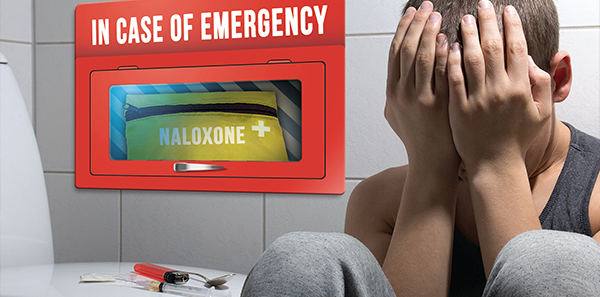
The article “Naloxone Distribution Strategies Needed in Emergency Departments” by Samuels et al (ACEP Now, March 2016) addresses the important and controversial topic of direct naloxone distribution to patients who may have an addiction to opioids. The authors recommend naloxone for patients who use heroin, exceed 100 mg of morphine equivalents daily, have opioid abuse/dependency, or have had an opioid overdose. They recommend that staff training, program monitoring, and feedback should be data driven and provided on a regular basis.
Explore This Issue
ACEP Now: Vol 35 – No 06 – June 2016The problem of opioid addiction and related morbidity and mortality is one of increasing significance in the United States. Particularly in the ED environment, we frequently treat patients for opioid addiction and complications, including drug-seeking behavior, accidental or intentional overdose, and trauma attributable to opioid use, which may include significant morbidity and mortality.
The administration of naloxone by first responders has undoubtedly reduced deaths from opioid overdose for many years. Some also advocate for availability of naloxone to patients, family, and friends who may witness an overdose and its immediate effects. Immediate administration of naloxone can be lifesaving in such circumstances.
The effects of widespread naloxone availability to laypersons are unknown. Some question whether widespread availability might enable substance abuse by creating a false sense of security and by diverting attention and resources from addiction treatment. While naloxone clearly can be a lifesaving intervention for an opioid overdose, it is possible that its availability, in fact, increases opioid use and addiction.
While naloxone clearly can be a lifesaving intervention for an opioid overdose, it is possible that its availability, in fact, increases opioid use and addiction.
We concur that a lifesaving medication such as naloxone should be made available to patients at risk of opioid overdose. It should, however, be recognized by prescribers that naloxone is only a treatment for acute overdose and does not address the larger problem of addiction and high-risk behavior.
We recommend scientific research to study the consequences of naloxone distribution. Widespread use of a therapeutic agent should be embraced based on sound scientific evidence of its efficacy to patients. We also recommend societal resources to offer treatment for opioid addiction, including making inpatient and outpatient treatment available to all patients who are in need of treatment, regardless of gender, age, income, education level or ability to pay.
Dr. Marco is professor of emergency medicine at Wright State University Boonshoft School of Medicine in Dayton, Ohio.
Dr. Jesus is an attending physician at Augusta Health in Fishersville, Virginia.
Dr. Geiderman is a professor of emergency medicine and emergency department co-chairman at Cedars-Sinai in Los Angeles.
Dr. Baker is assistant professor of emergency medicine at the University of Toledo College of Medicine and Life Sciences in Ohio.
Pages: 1 2 | Single Page





One Response to “Naloxone Distribution to Patients in Emergency Department Raises Controversy”
February 2, 2017
Stuart Etengoff DO FACEPThe reference for the quote
“While naloxone…”
Agree with rest of article, however to raise the “possibility” of A=B, is the same as saying the availability of aspirin/AED decrease pts eating healthy.
This is time dependant POC life saving treatment.